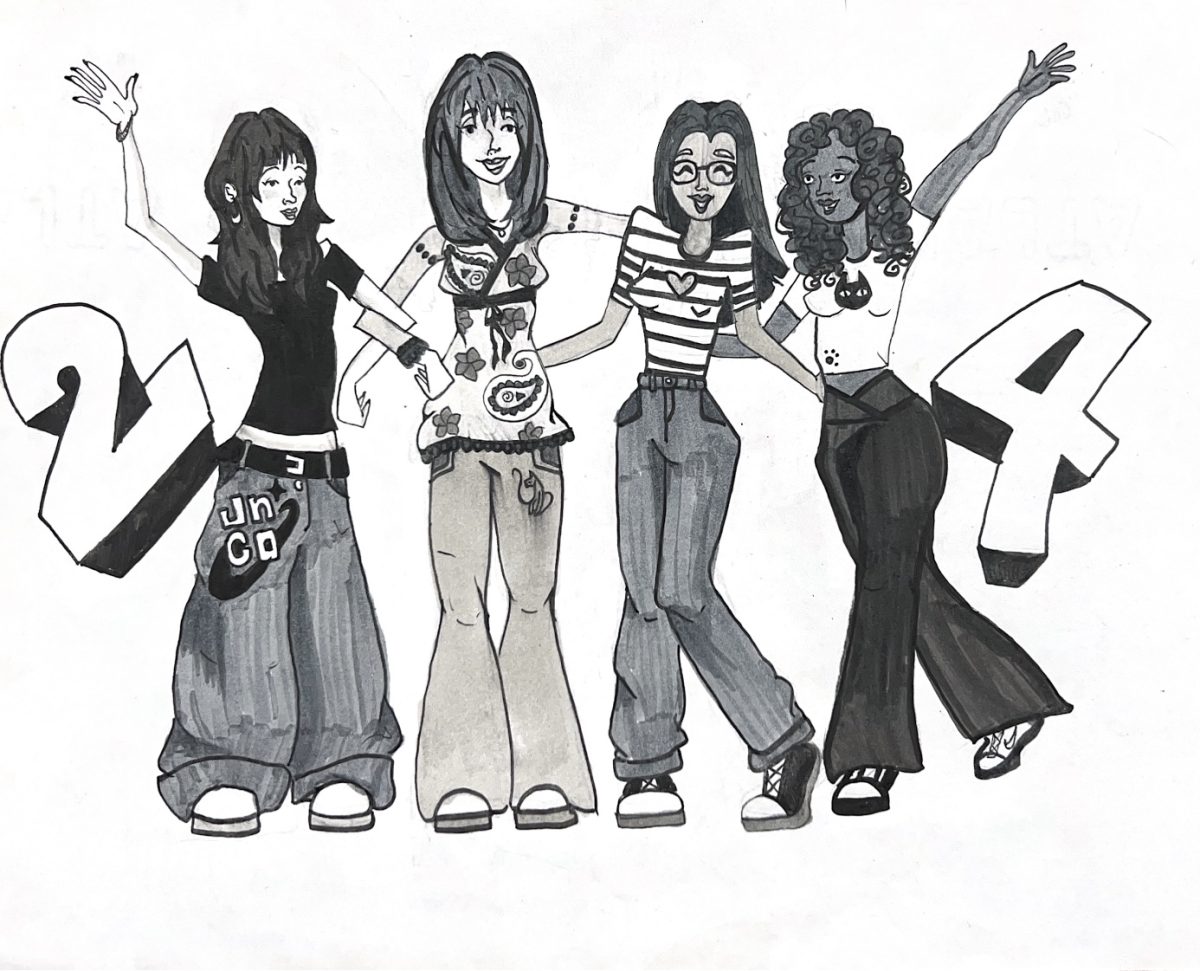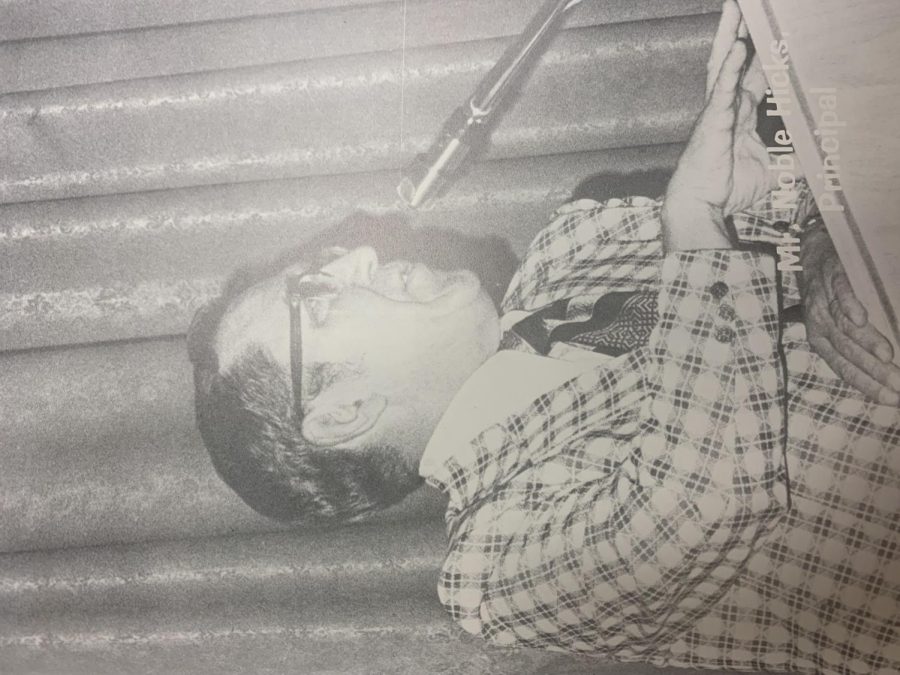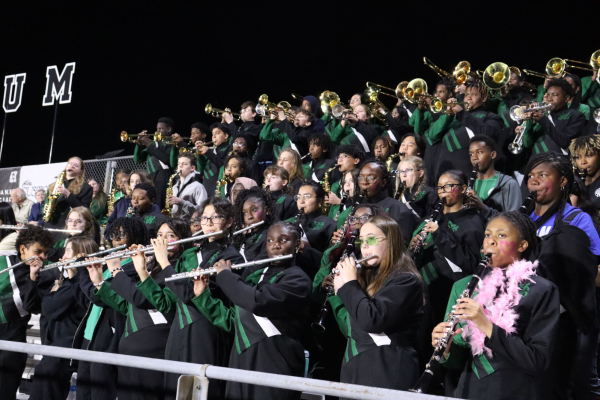A history of excellence
While bell bottoms and disco are often the first things that come to mind when one pictures the 1970s, White Station is defined by much more. During this period, Noble Hicks served as principal, fostering White Station’s recently added JROTC and then added tradition of Queen of Clubs.
From desegregation, to a secret newspaper, to a rat infestation, White Station High School has been put through its paces. However, these pitfalls have only led to greater success: in turn, White Station has generated prestigious alumni such as Kathy Bates and Alan Lightman, excelled in both athletics and academics and was even selected to pilot the AP African American Studies course. There are many components that underlie the success of the school even into the present, so it is best to start with the past:
The 1950s:
Before White Station would ever become the home to all of its present accomplishments, the school was known as Albert Pike High School, which it was known as from before the Civil War to after World War I.
It was not until the year 1950 — when Eppie White would donate three acres of land, upon which the Freshman Building now stands — that the school would adopt the name White Station. When it was annexed by Memphis City Schools, however, the school looked much different from how it is today. With its mascot as the bulldog and its colors blue and white, it was not until the 1956-1957 school year that White Station would become the Spartans, green and gray through and through.
“[In] 1850, [modern-day White Station] was part of Eppie White’s land,” AP Art teacher Charles Berlin said. “He sold some of the land to build a mason hall, and it was a pre-masonry hall that White Station was originally … and so that was the very earliest origin.”
The 1960s:
The school would then move into an era of desegregation — with Brown v. Board of Education occurring only in 1954 — schools in Tennessee would be slow to enforce this policy change. In contrast to its current vast diversity, White Station was heavily dominated by white students at this time, with only a few people of color making up the campus population. But this would not be the only difference between the times. Additionally, the campus still held a junior high as well as its high school, with the middle school found where the East Annex is located today.
“[1969] was at a time [when] the school had been integrated for three years,” Dee Kline, class of ‘69 White Station alumna said. “Tennessee dragged its feet. And when I say integrated, out of my class of four hundred kids … I’m sure we did not have more than 20 black kids in our class.”
The 1970s and 1980s:
During this fever dream of psychedelic shades and bold, flashy patterns, White Station remained distinguished in its role as an academic paragon. Even then, White Station offered 17 Advanced Placement classes; however, one large difference from the previous era is the school’s diversity. By this time, alumni remark upon finding a diversity at White Station that would put them ahead of the game as they attended diverse colleges — a sentiment maintained even now. White Station would consistently send students to elite colleges, and the school would be the winners of the first Knowledge Bowl, held in the 1987-1988 school year.
“White Station had the reputation of if you went to White Station, and you did well and graduated, you had a good shot at good schools,” Mrs. Mullins, class of ‘84 White Station alumni, said. “[At] the top level were UCLA, Ivy Leagues … the second tier, you get into University of Chicago or a bunch of people went to Emory and places like that that are pretty competitive … and get scholarships too … So, the idea that you could go to a public school, … get into a good college and do well and get some scholarship money on top of that — it was a good thing.”
As faculty and students have reflected, this period of time served as one of great leadership in the form of each principal: from Noble Hicks, serving as principal from 1971 – 1979, to Donald Coffey, who served as principal from 1980 to 1994; their unique authority is what aided in the school’s continued success. The Optional Program was established during this time, and White Station was one of the first schools offering its optional status. Parents camped at the Board of Education for hours and even through the night to be able to attend White Station and the flood of those hoping to attend ensured competition: if one could not maintain their grades at White Station, there were five people waiting to take their spot.
“[Coffey] was all business,” AP Physics and Calculus teacher Wayne Mullins said. “I don’t think there’s anything more magical. He sat down and he said ‘I’m going to sign this [contract], and we’re going to get along just fine, and while I’m signing this, I’m going to tell you the secret to education: As long as you do what’s best for my students, you will never go wrong in this business, and I’ll thank you even against parents.’”
The 1990s:
As portable computers populated each family’s home, White Station’s campus also underwent many changes. Around the introduction of the school’s third principal, Steve Simpson, the elementary school was relocated to its current location on Chickasaw Road. While the school’s campus was changing, so did the student body. In the late 90’s, a lawsuit occurred, allowing municipalities to attend White Station, meaning, much like today, students at White Station came from all around the city. However, even in this period of great change and diversity, Simpson was known for upholding Spartan pride and keeping the student body unified.
“[Simpson] kept that bar high and demanded that from his teachers, and it worked,” Mullins said. “Simpson was a basketball nut, and I tell you, I think it was the year after I left and we lost the state championship by a buzzer beater. As soon as we lost, the game was over, and you heard the White Station band start playing ‘I’m So Proud to be a Spartan’ … and it was a Spartan pride of ‘so, we didn’t win, but I still love my school.’”
The 2000s and 2010s:
In a period of nostalgia when many current students were barely aware White Station existed, the school continued to flourish. From Dr. Wanda Wynette into the year 2006, to Terry Brown who served for one year in the 2006-2007 school year, this period would fluctuate between principals until 2007 when Principal David Mansfield took over. During this time, the school would undergo its construction of the Freshman Building, and Mansfield would dream up the idea of “Phase Two,” a plan for the overall renovation of White Station, parts of which have been completed in the present, and some of which are still ongoing. White Station excellence, however, did not slow during this period, as the school churned out more National Merit Scholars than ever. In fact, the most National Merit Scholars in Tennessee in the 2011-2012 and 2012-2013 school years — 22 in the former, 23 in the latter — came from White Station.
“This was before the digital age,” Brett Sander, class of ‘04 White Station alumnus, said. “I believe many students read [the paper] because there weren’t many distractions from school — this was pre-cell phone. Around 2000 or 2001, there was an underground newspaper that may have had some influence — at least enough to get some students suspended.”
The present:
And finally, as the Spartan namesake nears its 65th birthday, the school propels forward into the present, with just as much to look forward to. With the introduction of its newest principal Carrye Holland in the 2019-2020 school year and Vice Principal Michael Ayers, the 2020s brought a myriad of improvements and changes. Upon the addition of its latest AP course African American Studies and changes to the grading scale to prepare for a college environment, the academic environment continues to flourish, and with the completion of courtyard renovations in 2021, White Station’s landscape continues to improve. While White Station has existed for decades, it continues to uphold its standards of excellence that have set up thousands of alumni for success and continues to prepare students for the real world even today.
Your donation will support the student journalists of White Station High School. Your contribution will allow us to purchase equipment and cover our annual website hosting costs.









































